A Comprehensive Analysis
Buy CPC Traffic | Buy Display Ads | Exclusive traffic sources | Buy Push Ads | Popunder ADS | Buy Native Ads | Buy Preroll Ads
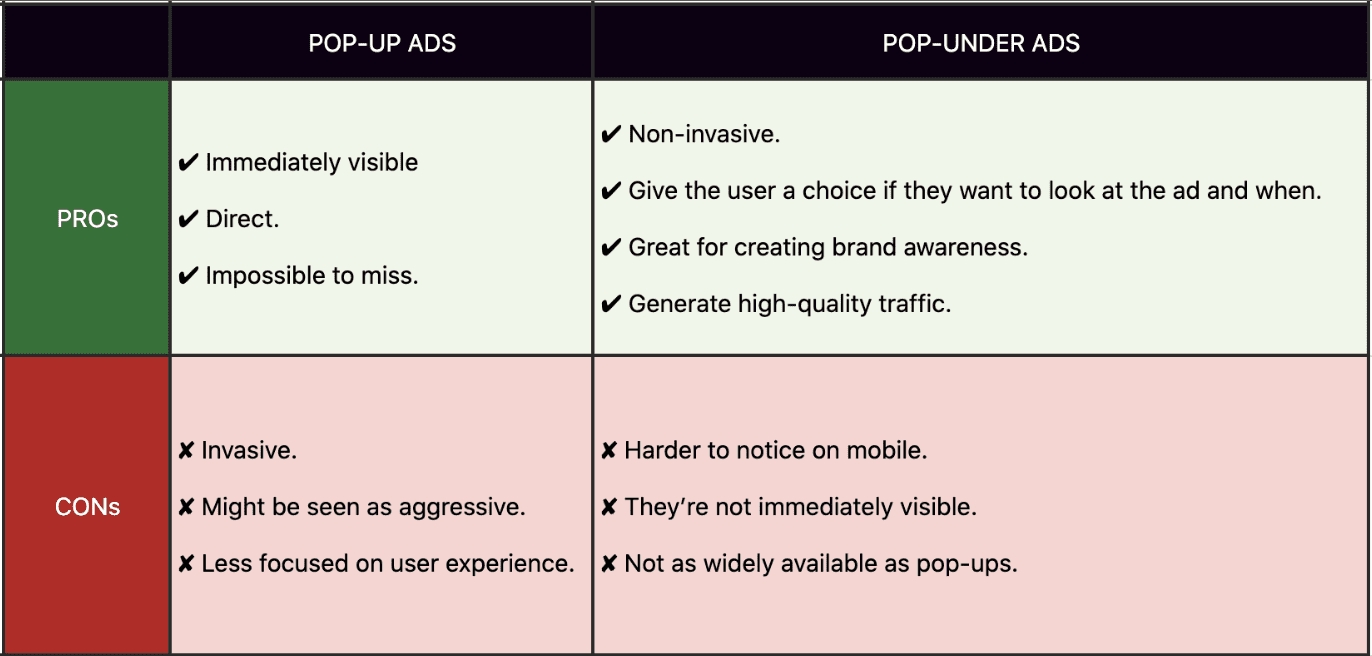
Buy CPC Traffic | Buy Display Ads | Exclusive traffic sources | Buy Push Ads | Popunder ADS | Buy Native Ads | Buy Preroll Ads
Popunder advertising has gained significant popularity in recent years as a cost-effective method for advertisers to reach a wide audience. This form of online advertising involves displaying an ad in a new browser window that opens beneath the main browsing window, allowing users to interact with the ad at their convenience. However, like any advertising strategy, popunder traffic has its pros and cons that advertisers should consider before incorporating it into their marketing campaigns.
One of the main advantages of popunder traffic is its ability to achieve high visibility and impressions. The popunder ad format ensures that the ad is delivered to the user's screen without being blocked by ad blockers, increasing the chances of it being seen. Additionally, because the ad opens in a new window, it is less intrusive and allows users to continue their browsing experience uninterrupted. This can result in higher click-through rates and conversions compared to other forms of online advertising.
Another benefit of popunder traffic is its cost-effectiveness. Popunder ads often come at a lower cost per thousand impressions (CPM) compared to other ad formats such as banners or interstitials. Advertisers can reach a large number of users for a relatively low investment, making it an attractive option, especially for businesses with limited advertising budgets. Additionally, popunder campaigns can be easily optimized and targeted to specific demographics or user behaviors, further maximizing their effectiveness.
However, it is important for advertisers to consider the potential drawbacks of popunder traffic as well. One of the main concerns is the user experience. While popunder ads are less intrusive than pop-up ads, they can still be perceived as annoying or disruptive by some users. This can negatively impact the user's perception of the advertised brand or product and result in a lower conversion rate. Advertisers need to carefully consider their target audience and ensure that the popunder ads align with their browsing habits and preferences to minimize any negative impact.
Another challenge with popunder traffic is ad fraud. Due to its unobtrusive nature, popunder ads may be susceptible to fraudulent behaviors such as fake impressions or clicks, which can inflate ad performance metrics and waste advertisers' budget. Advertisers should work with reliable ad networks or platforms that have robust anti-fraud measures in place to mitigate this risk.
In conclusion, popunder traffic offers advertisers a cost-effective and highly visible advertising opportunity to reach a wide audience. However, it is crucial for advertisers to carefully consider the potential impact on the user experience and the risk of ad fraud. By addressing these concerns and implementing best practices, advertisers can leverage the benefits of popunder traffic and maximize the success of their advertising campaigns.
Exploring Popunder Traffic for Advertisers: A Comprehensive Analysis
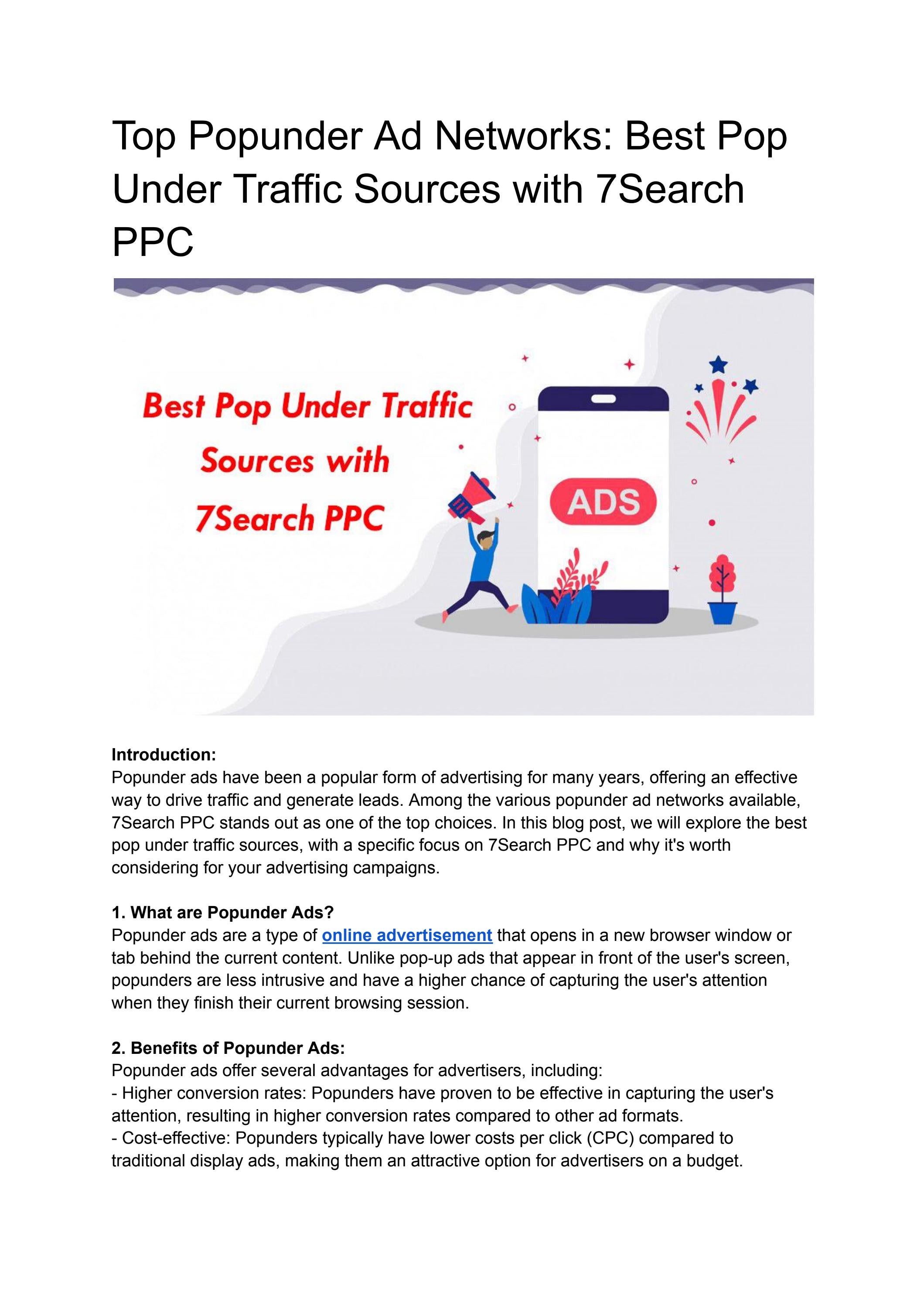
Popunder traffic is a popular marketing tactic used by advertisers to drive traffic and increase brand visibility. While it has its advantages, it also comes with its fair share of drawbacks. In this comprehensive analysis, we will delve into the pros and cons of popunder traffic for advertisers.
The Pros
Popunder ads are known for their attention-grabbing nature. They appear behind the main browser window, ensuring that users notice them when they close the current page or minimize their browser. This high visibility can result in increased click-through rates and conversions.
Popunders can be highly targeted. Advertisers can use various targeting options such as demographics, interests, and browsing behavior to reach their desired audience. This level of targeting ensures that the ads are shown to the right people at the right time, increasing the likelihood of engagement.
Popunder traffic can provide a cost-effective solution for advertisers. Compared to other advertising formats like display ads or video ads, popunder ads typically have lower cost-per-click (CPC) rates. This means that advertisers can reach a larger audience for a lower cost, potentially optimizing their return on investment (ROI).
The Cons

One of the primary drawbacks of popunder traffic is the potential for user annoyance. Popups and popunders can disrupt the user experience by interrupting their browsing session. If users find these ads intrusive, they may develop negative sentiments towards the brand or website, leading to a decline in engagement or even increased bounce rates.
Another downside of popunder traffic is its potential for low-quality traffic. Popunders can be associated with lower engagement rates and lower conversion rates compared to other forms of advertising. Advertisers need to consider the quality of the traffic they receive from popunder campaigns and monitor performance closely to ensure they are achieving their desired outcomes.
Popunders can also be subject to ad-blocking software. With the increasing popularity of ad blockers, there is a risk that popunders may not reach their intended audience. This can limit the reach and effectiveness of popunder campaigns, requiring advertisers to find alternative methods to reach their target audience.
In Conclusion
Popunder traffic can be a powerful marketing tool for advertisers, with its attention-grabbing nature and highly targeted options. However, it also comes with potential drawbacks, such as user annoyance and ad-blocking concerns. Advertisers must carefully assess the pros and cons and consider their specific marketing goals before implementing a popunder traffic strategy.
Advantages of Popunder Traffic
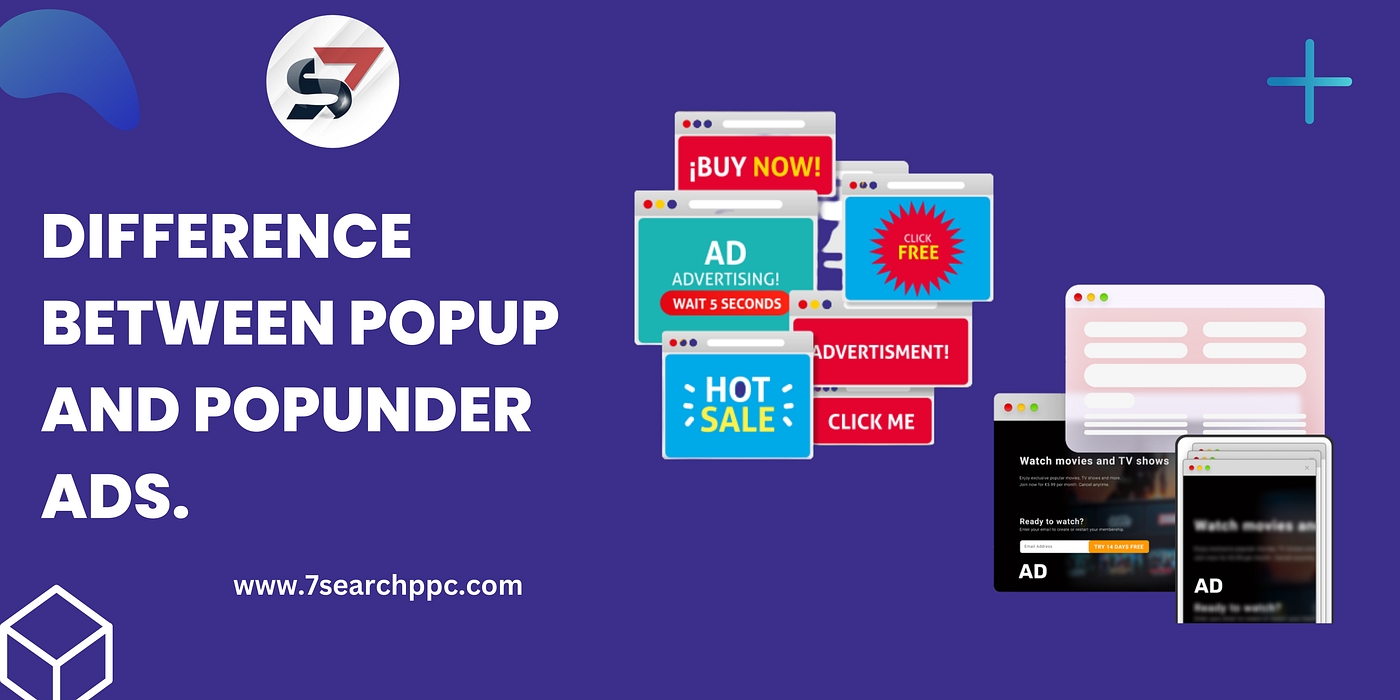
Popunder traffic offers a variety of advantages for advertisers looking to reach their target audience effectively. This form of advertising involves displaying a website or landing page in a new browser window that appears behind the main browser window, capturing the user's attention after they have finished browsing the current page. Here are some key advantages of using popunder traffic:
1. High visibility
One of the main advantages of popunder traffic is its high visibility. Since the popunder window appears behind the main browser window, it is less likely to be closed immediately by the user, increasing the chances of the ad being seen and engaged with. Advertisers can use this to their advantage by creating compelling and attention-grabbing ads that drive user action.
2. High conversion rates
Popunder traffic has been proven to have high conversion rates. As the ads are displayed when users are actively engaged with their current browsing session, they are more likely to be receptive to relevant and engaging offers. By carefully targeting the right audience and using persuasive ad copy, advertisers can increase the chances of converting users into paying customers or leads.
3. Effective targeting options
With popunder traffic, advertisers have the ability to target their ads to specific demographics, locations, interests, and behaviors. This level of targeting allows advertisers to reach the most relevant audience for their product or service, increasing the chances of driving conversions and maximizing return on investment (ROI).
In conclusion, popunder traffic offers advertisers a range of advantages, including high visibility, high conversion rates, and effective targeting options. By leveraging these advantages and utilizing engaging ad content, advertisers can effectively reach their target audience and achieve their marketing goals. For more information on alternative ad formats, consider push ads.
Disadvantages of Popunder Traffic
While popunder traffic has its benefits, there are also several disadvantages that advertisers should consider before utilizing this form of advertising:
1. Intrusive User Experience: Popunder ads can be seen as intrusive by users, as they appear behind the main browser window and can disrupt the user's browsing experience. This can potentially lead to a negative perception of the advertised brand or product.
2. Ad Blocking Software: Many internet users employ ad-blocking software to eliminate popunder ads altogether. This can significantly reduce the reach and effectiveness of popunder advertising campaigns.
3. Conversion Rates: Popunder ads may have lower conversion rates compared to other forms of online advertising. Users who inadvertently stumble upon these ads may not be as engaged or interested in the advertised offer, resulting in lower conversion rates for advertisers.
4. Reputation Concerns: Popunder ads have been associated with spammy and malicious websites in the past. Advertisers need to be cautious when working with ad networks to ensure that their brand is not associated with any unethical practices.
5. Limited Targeting Options: Compared to other advertising methods, popunder traffic may offer limited targeting options. Advertisers may have difficulty reaching their desired audience or specific demographics, which can hinder the overall effectiveness of their campaigns.
While popunder traffic can be an effective advertising tool, advertisers should carefully weigh the potential disadvantages against the benefits to determine if it aligns with their marketing objectives and target audience.
Targeting Capabilities of Popunder Traffic
One of the key advantages of using popunder traffic for advertisers is its targeting capabilities. With popunder ads, advertisers have the ability to reach a highly specific audience based on their interests, demographics, and browsing behavior.
1. Interest-based targeting: Popunder traffic allows advertisers to target users who have shown interest in specific topics or industries. Advertisers can choose to display their ads to users who have visited websites related to their products or services. This ensures that their ads are seen by users who are most likely to be interested in what they have to offer.
2. Demographic targeting: Popunder ads also enable advertisers to narrow down their audience based on demographic factors such as age, gender, income, and location. This level of targeting ensures that advertisers can tailor their ads to specific consumer segments, making their campaigns more effective and efficient.
3. Behavioral targeting: Another targeting capability of popunder traffic is the ability to target users based on their browsing behavior. Advertisers can choose to display their ads to users who have recently searched for relevant keywords or have visited specific websites. This allows advertisers to reach users who have shown a recent interest in their products or services and increases the chances of conversion.
Overall, the targeting capabilities of popunder traffic provide advertisers with the opportunity to reach their desired audience with precision. By delivering ads to users who have a genuine interest in their offerings, advertisers can maximize their ROI and improve the effectiveness of their marketing campaigns.
Conversion Rates in Popunder Advertising
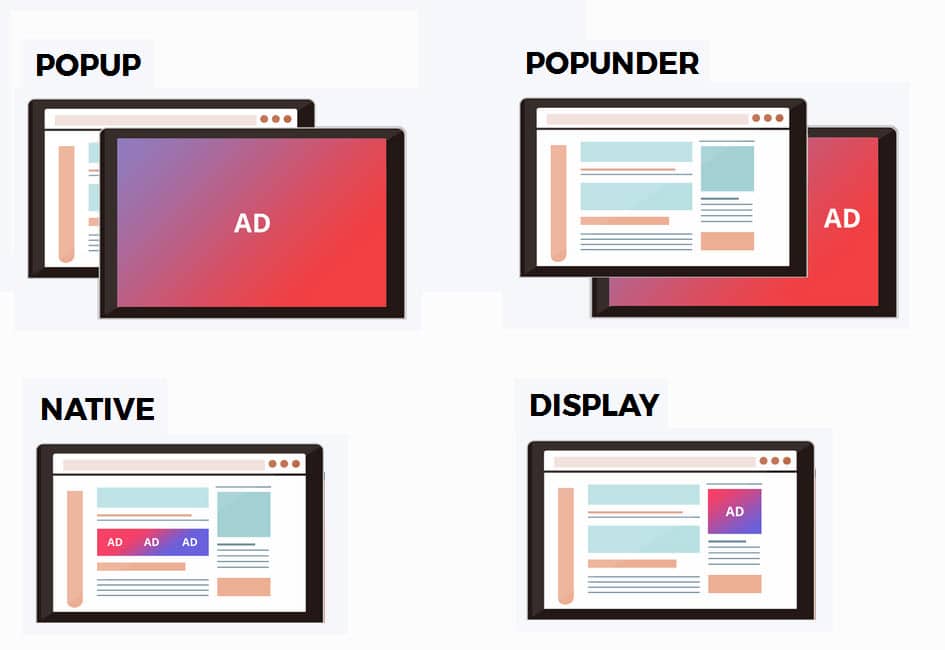
Conversion rates are a crucial metric for evaluating the success of any advertising campaign, including popunder advertising. A conversion is the desired action that an advertiser wants a user to take after being exposed to their ad. It could be anything from making a purchase to signing up for a newsletter.
When it comes to popunder advertising, the conversion rates can vary depending on various factors. Here are some pros and cons that can influence the conversion rates in popunder advertising:
Pros:
High Visibility: Popunder ads have a high visibility as they appear in a separate window behind the main browser window. This can capture the user's attention and increase the chances of conversion.
Targeted Audience: Popunder ads can be targeted to specific demographics and interests, allowing advertisers to reach their desired audience. When the ads are relevant to the user, the conversion rates tend to be higher.
Cons:

Interruptive Nature: Popunder ads can be seen as interruptive by users, as they appear unexpectedly and require immediate attention. This can lead to a lower conversion rate, as users may be more likely to close the ad without taking the desired action.
Ad Fatigue: Users who are exposed to multiple popunder ads may experience ad fatigue, causing them to become desensitized to the ads over time. This can result in a lower conversion rate, as the impact of the ads diminishes.
Ultimately, the conversion rates in popunder advertising depend on the effectiveness of the ad itself, the targeting strategy, and the user experience. Advertisers should carefully consider these factors and continually evaluate and optimize their campaigns to maximize conversion rates.
Cost-Effectiveness of Popunder Traffic
When it comes to exploring advertising options, advertisers are always looking for ways to increase their reach while maximizing their return on investment. In this context, popunder traffic has gained significant attention due to its cost-effectiveness.
Popunder traffic provides a unique opportunity for advertisers to connect with their target audience in a cost-effective manner. Unlike other forms of online advertising, such as display or push ads, where advertisers pay per click or per impression, popunder traffic allows advertisers to pay only for the impressions that actually convert into website visits or actions.
This pay-per-action model ensures that advertisers are not paying for wasted impressions. Instead, they are paying for actual engagement with their target audience. This cost-effectiveness is particularly beneficial for advertisers with limited budgets or those looking for a higher return on investment.
Furthermore, popunder traffic often comes with relatively lower advertising costs compared to other advertising options. This means that advertisers can reach a larger audience for a fraction of the cost, which can lead to higher conversions and increased revenue.
However, it is important for advertisers to carefully monitor the quality of the popunder traffic they receive. While popunders can be an effective and cost-efficient advertising option, some sources may deliver low-quality traffic, resulting in low conversion rates. Advertisers should work with reputable ad networks or traffic providers to ensure they are receiving high-quality, targeted traffic for their campaigns.
In conclusion, the cost-effectiveness of popunder traffic makes it an attractive option for advertisers. With its pay-per-action model and lower advertising costs, advertisers can reach a wider audience and achieve higher conversions, ultimately maximizing their return on investment.
Best Practices for Utilizing Popunder Traffic
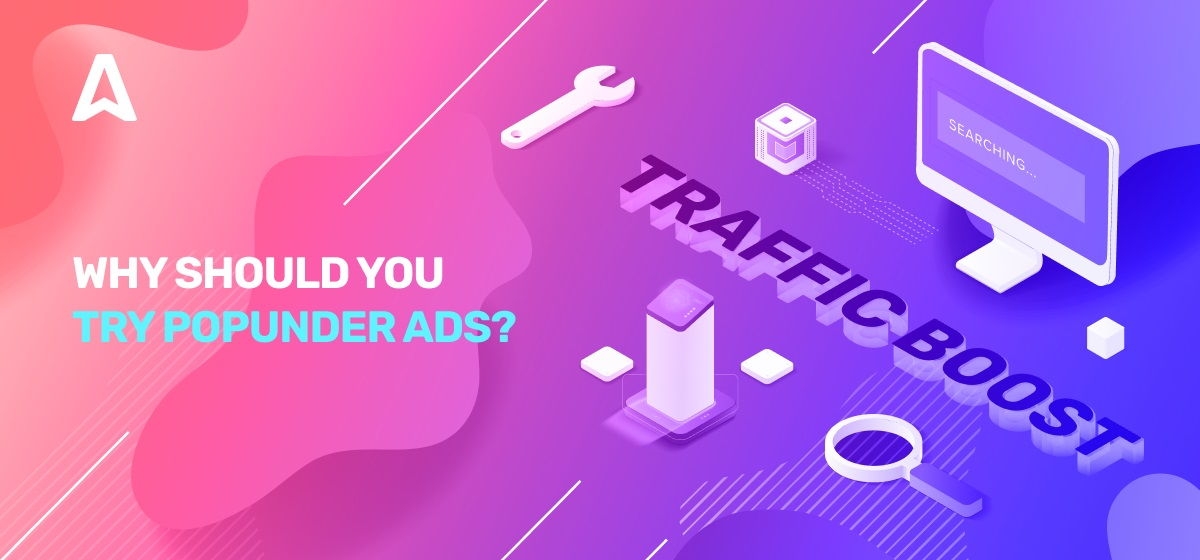
Popunder traffic can be a powerful tool for advertisers, as it allows them to reach a large number of potential customers in a non-intrusive manner. However, it is important to approach popunder traffic strategically in order to maximize its effectiveness. Here are some best practices for utilizing popunder traffic:
1. Target Your Audience
One of the key factors in the success of popunder advertising is targeting the right audience. By identifying your target market and understanding their demographics, interests, and online behavior, you can ensure that your popunder ads are displayed to the most relevant and interested users.
2. Create Compelling Ad Copy
With popunder traffic, you have a limited amount of time to capture the attention of users before they close the popunder window. It is essential to create compelling ad copy that is concise, engaging, and clearly communicates the value proposition of your product or service. A strong call-to-action can also encourage users to take the desired action.
3. Optimize Landing Pages
The landing page that users are directed to after clicking on a popunder ad is crucial for conversion. It is important to create landing pages that are visually appealing, easy to navigate, and optimized for mobile devices. Clear and concise messaging, relevant content, and a seamless user experience can help increase the chances of conversion.
4. Test and Track Performance
Continuous testing and tracking of performance metrics are essential for optimizing your popunder campaigns. A/B testing different variations of your ad copy, landing pages, and targeting parameters can help identify what works best for your audience. By monitoring and analyzing key performance indicators, such as click-through rates and conversion rates, you can make data-driven decisions to improve campaign performance.
5. Adhere to Best Practices
While popunder traffic can be an effective advertising method, it is important to adhere to best practices and industry standards. Avoid using deceptive or misleading ad copy, ensure your ads comply with legal regulations, and respect user privacy. By maintaining ethical practices, you can build trust with your audience and enhance the reputation of your brand.
Overall, popunder traffic can be a valuable tool for advertisers when used strategically. By targeting the right audience, creating compelling ad copy, optimizing landing pages, testing and tracking performance, and adhering to best practices, advertisers can maximize the effectiveness of their popunder campaigns and achieve their marketing goals.
What is popunder traffic?
Popunder traffic refers to the advertising method where a new browser window is opened in the background, usually triggered by a user action such as clicking a link or closing a website. The ad is only visible when the user closes or minimizes their current window, revealing the ad that was hidden behind it.
What are the advantages of using popunder traffic for advertisers?
There are several advantages of using popunder traffic for advertisers. Firstly, popunder ads typically have a higher click-through rate (CTR) compared to other ad formats. This means that advertisers have a higher chance of getting conversions and driving traffic to their websites. Additionally, popunder ads can be targeted to specific demographics or user behaviors, allowing for more precise ad targeting. Lastly, popunder ads can be a cost-effective advertising method as they can be purchased on a cost-per-view (CPV) basis.
What are the disadvantages of using popunder traffic for advertisers?
While popunder traffic has its advantages, there are also some disadvantages for advertisers to consider. One major downside is that popunder ads can be perceived as intrusive by users, which may lead to a negative perception of the brand or product being advertised. Additionally, some users may have pop-up blockers installed on their browsers, which can prevent popunder ads from being displayed. This can limit the reach of the advertising campaign. Finally, popunder traffic can sometimes result in low-quality traffic, as some users may accidentally trigger the popunder ad without any genuine interest in the advertised product or service.
How can advertisers optimize their popunder traffic campaigns?
Advertisers can optimize their popunder traffic campaigns by following a few key strategies. Firstly, it's important to carefully select the targeting options to ensure that the ads are reaching the right audience. This can include targeting specific demographics, geographic locations, or user behaviors. Secondly, advertisers should monitor and analyze the performance of their popunder ads to identify any areas for improvement. This can involve tracking key metrics such as click-through rate (CTR) and conversion rate, and making adjustments to the ad copy or design if necessary. Lastly, advertisers should regularly test different variations of their popunder ads to determine which ones are the most effective in terms of generating conversions and driving traffic to their websites.
How does popunder traffic compare to other types of online advertising?
Popunder traffic has its own unique advantages and disadvantages compared to other types of online advertising. Unlike traditional banner ads or search engine marketing, popunder ads have the ability to appear in the background and capture the user's attention when they least expect it. This can make popunder traffic more intrusive, but also more effective in terms of generating clicks and conversions. However, popunder ads may not be suitable for every marketing campaign, and advertisers should consider factors such as their target audience, campaign objectives, and brand image before deciding to use popunder traffic as an advertising method.
Buy CPC Traffic | Buy Display Ads | Exclusive traffic sources | Buy Push Ads | Popunder ADS | Buy Native Ads | Buy Preroll Ads
2022-2024 @ Exploring the Pros and Cons of Popunder Traffic for Advertisers